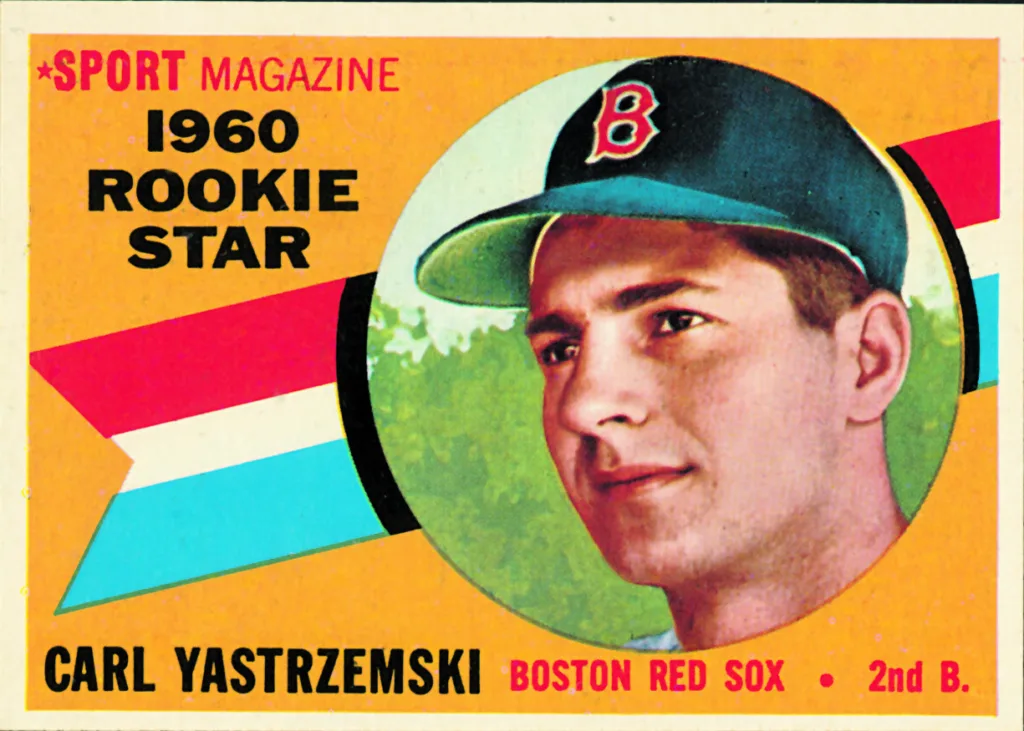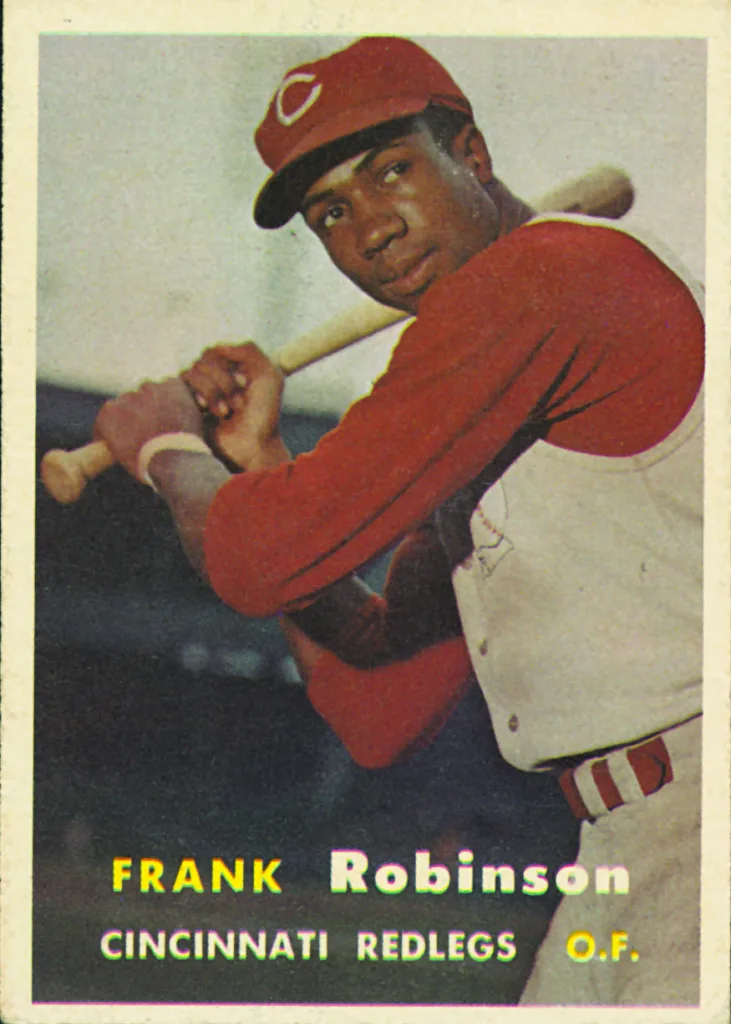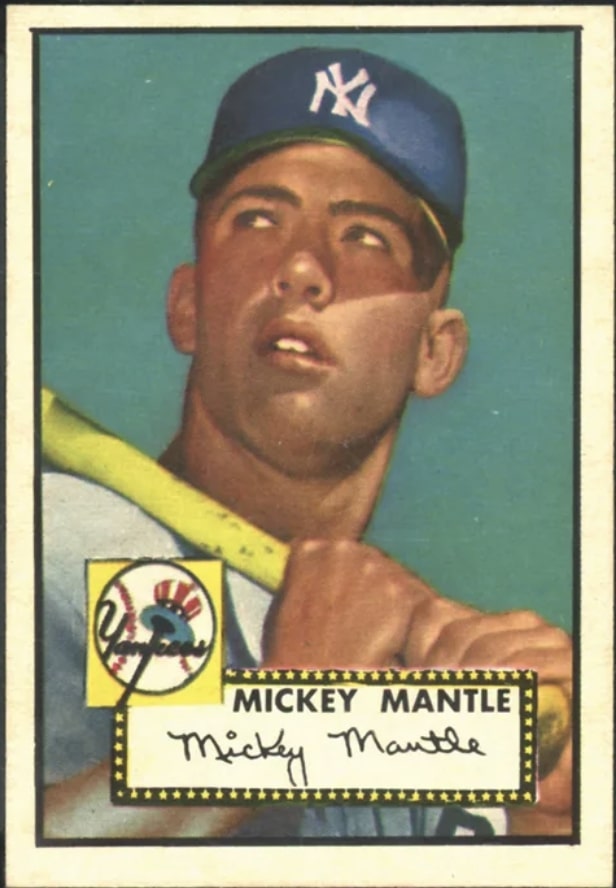
Iconic Hitters and Their Cards
Baseball’s Triple Crown is one of professional sports’ greatest and most elusive accomplishments. With about 10 games left to play this season, Aaron Judge has a significant lead in both the HR and RBI columns, and with a .333 average, he is currently only behind Bobby Witt Jr. Perhaps the crown is not out of reach.
Since RBIs became an official MLB statistic in 1920, every player (with Miguel Cabrera a first ballot shoe-in) who has won the Triple Crown has gone on to earn a spot in the Hall of Fame. It is a singular honor that represents the pinnacle of offensive prowess in the sport.
In this post, starting with the most recent winners, we’ll compare the stats and review the most coveted cards for each of the legends who have accomplished the rare feat.

2000 Topps Traded #TTA40 Miguel Cabrera Auto
Miguel Cabrera – 2012
In 2012, Miggy was in the middle of an 8-year run of hitting above .300. Winning the MVP award for the season, Cabrera’s .330 average was packaged with 44 HRs and a whopping 139 RBIs. A 12-time All-Star, Cabrera will certainly enter the Hall of Fame in 2029 when he becomes eligible. The autographed 2000 Topps Traded #TTA40, which featured the superstar in a Marlins jersey, is the most desirable Cabrera card. For die-hard Tigers fans who only recognize him in his navy and white Detroit uniform, the autographed 2019 Topps Heritage Real One is a worthy runner-up. With only 70 copies printed, the rarer red-ink signature version can be especially valuable.

1960 Topps Baseball #148 Carl Yastrzemski
Carl Yastrzemski – 1967
Although Yaz’s career numbers are certainly Hall-of-Fame worthy, he might have been an unlikely candidate for the Triple Crown. He was a respected hitter with previous career highs of just 20 HRs and 94 RBIs, but in 1967, everything clicked for the Boston Left-Fielder. Yastrzemski’s 44 HRs and 121 RBIs that season and his .326 average won him the Triple Crown, but he also led the league with 189 hits and 112 runs. And keep reading: he led the league in on-base percentage, slugging percentage, and OPS that year, too! Yastrzemski’s 1960 Topps rookie card #148 is notable partly because he did not play for the Red Sox until 1961.

1957 Topps Baseball #35 Frank Robinson
Frank Robinson – 1966
Like most Triple Crown winners, Robinson, age 30 in 1966, was in the middle of his outstanding career when he peaked. Having played ten seasons with Cincinnati, 1966 was Robinson’s first year with the Baltimore Orioles. His 49 HR and 122 RBIs came with a .316 average, which was almost ten points better than his closest competition. Robinson won Rookie of the Year in 1956, and his 1957 rookie card #35 is highly coveted among hobbyists.

1952 Topps Baseball #311 Mickey Mantle
Mickey Mantle – 1956
The Mick was so good in 1956 that his AL Triple Crown was actually an MLB Triple Crown. Although he was in his sixth season, Mantle was just 24 years old when he led the league in three columns. Winning his first of three career MVP awards that season, he belted 52 HRs, knocked in 130 runs, and posted a .353 average on his way to a World Series title. The 1952 #311 Mantle is one of the best-known cards in the hobby: in 2022, one sold for a record $12.6 million.

Ted Williams – 1942 and 1947
It should come as no surprise that “the greatest hitter who ever lived” managed to win a Triple Crown, but the fact is, the Splendid Splinter did it twice: once before taking three seasons off for military service and once after. In 1942, 36 HRs, 137 RBIs, and .356 sufficed to win the Triple Crown, and five years later, when he did it again, he posted 32 homers, 114 RBIs, and a .343 average. There are dozens of coveted Ted Williams cards, and the 1951 Bowman #165 Ted Williams is one of the best.

1938 Goudey Heads Up #286 Joe “Ducky” Medwick
Joe Medwick – 1937
A member of the famed “Gashouse Gang,” the St. Louis Cardinal left-fielder played before the golden age of baseball cards, so his name might not be as well-known as recent superstars, but “Ducky” Medwick, a Hall of Famer, was a career .324 hitter. In 1937, his batting average soared to .374, and with 31 HRs and a staggering 154 RBIs, he was the obvious choice for MVP that year.

Lou Gehrig – 1934
As with Mantle’s 1956 season, Gehrig’s Triple Crown was unchallenged even if National League players were included. With a career .340 average, it is surprising that 1934 was the only year he won a batting title. His .363 average that season proved sufficient, and his 49 homers and 149 RBIs were equally impressive. The 1933 Goudey #92 Gehrig is considered one of the best Gehrig cards.

Jimmie Foxx – 1933
Playing with the Philadelphia Athletics, Foxx had won the 1932 MVP award as he posted a league-leading 58 HRs and 169 RBIs, but his .364 average that season left him three points behind Dale Alexander. The following season, Foxx put up similarly huge numbers, with 48 HRs, 163 RBIs, and this time, a .356 average, which proved to be enough to win the Triple Crown (and another MVP award). Foxx was undoubtedly one of the best hitters ever to play the game. The 1933 Goudey #154 is typically considered to be the most highly prized Jimmie Foxx card.

1933 Goudey #128 Chuck Klein
Chuck Klein – 1933
While Jimmie Foxx won the Triple Crown in the AL in 1933, Chuck Klein, playing with Philadelphia’s other team, the Phillies, won the NL title the same season. Remarkably, after winning the 1932 MVP award, and although Klein’s .368 average, 28 homers, and 120 RBIs all led the league, he finished second to Pitcher Carl Hubbell that season when it came to MVP voting in 1933. The 1933 Goudey #128 is Klein’s most sought-after card.

1917 E135 Collins-McCarthy/Boston Store #80 Rogers Hornsby
Rogers Hornsby – 1922 and 1925
For six straight seasons in the 1920s, Rogers Hornsby led the league in batting average, on-base percentage, slugging percentage, and OPS. The dead-ball era had ended, and homerun totals were beginning to explode, but no one rivaled Hornsby’s offensive numbers. In 1922, Hornsby hit .401 and led the league with 42 HRs and 152 RBIs. Three years later, still with St. Louis, Hornsby repeated the feat, posting a .403 average alongside 39 HRs and 143 RBIs. The best Hornsby cards are more than 100 years old now and are extremely rare and valuable. His 1916 W-UNC “Big Head” card #7 is a favorite, while the black and white 1917 E135 Collins-McCarthy/Boston Store #80 brings equal value and is very difficult to find in good condition.